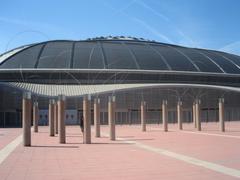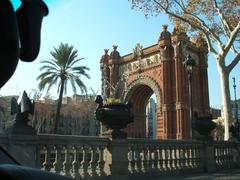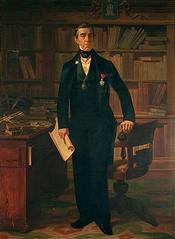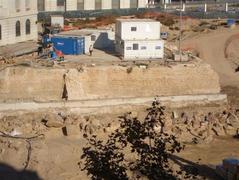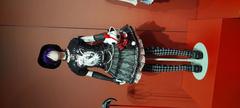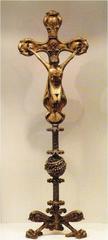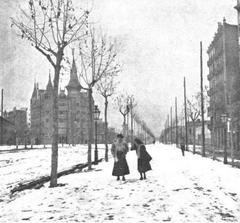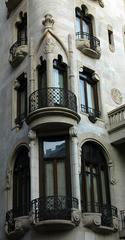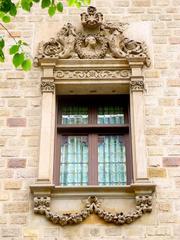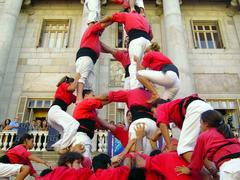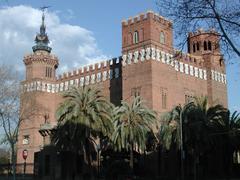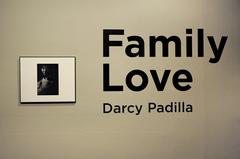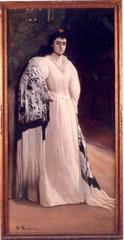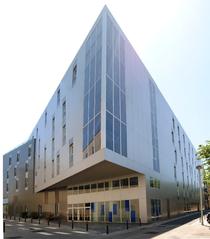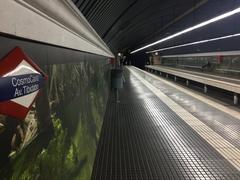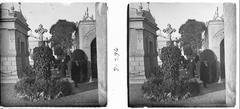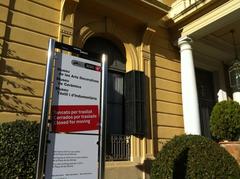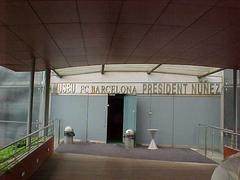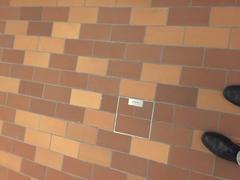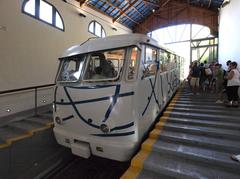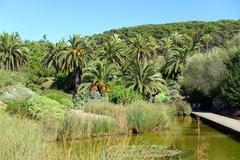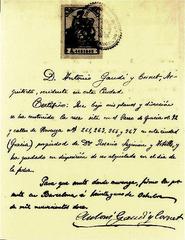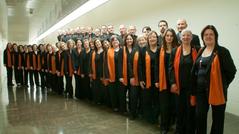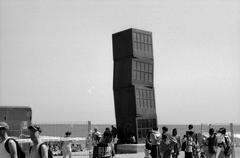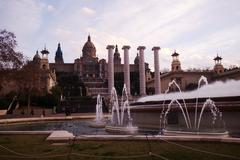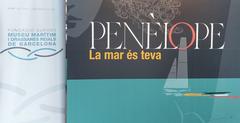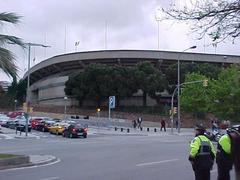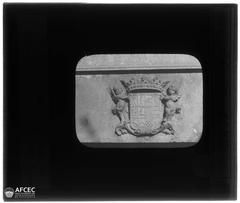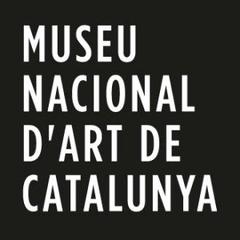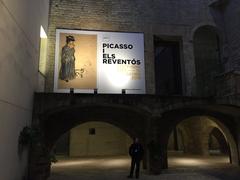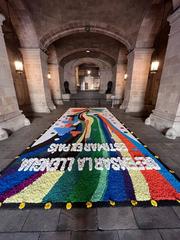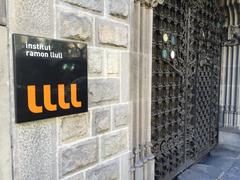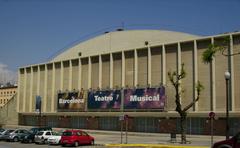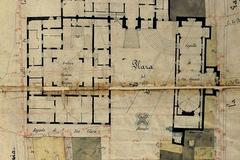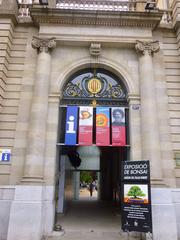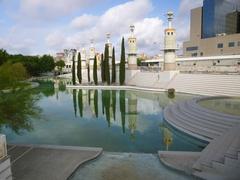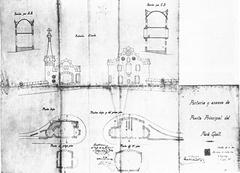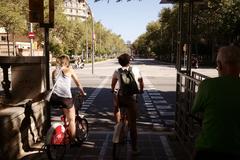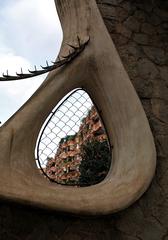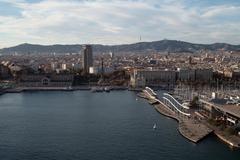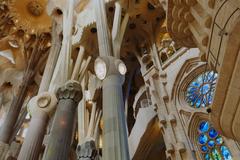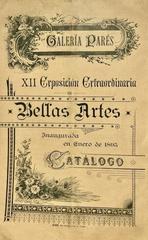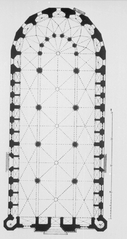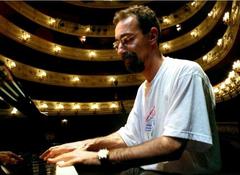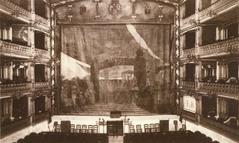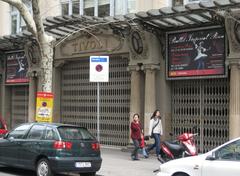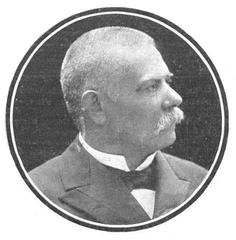
Visiting Hours, Tickets, and Historical Sites: Comprehensive Guide to Porta Neoclàssica in Barcelona, Spain
Publication Date: 17/07/2024
Introduction to Porta Neoclàssica
The Porta Neoclàssica and Arc de Triomf in Barcelona are not just architectural marvels but significant historical landmarks. The Arc de Triomf, constructed as the main entrance for the 1888 Barcelona World Fair, showcased Barcelona’s burgeoning industrial and technological prowess to the world (Exposició Universal de Barcelona). Designed by the renowned Catalan architect Josep Vilaseca i Casanovas, it embodies a spirit of progress, arts, and industry. Combining elements of Moorish, Mudéjar, and classical Roman architectures, the Arc de Triomf stands as a testament to Barcelona’s rich cultural heritage.
On the other hand, the Porta Neoclàssica is situated at the bottom of Passeig de Lluís Companys. Built for the same 1888 World Fair, it symbolizes the city’s cultural and historical heritage through its neoclassical architecture. Whether you are a history enthusiast, architecture lover, or just looking to explore Barcelona, these iconic structures are a must-visit. This comprehensive guide will delve into their historical significance, architectural features, visitor information, travel tips, and nearby attractions to enhance your visit.
Table of Contents
- Introduction
- Historical Background and Significance
- Visitor Information
- Architectural Features and Styles of Arc de Triomf
- History and Cultural Significance
- FAQ
- Conclusion
Exploring the Barcelona Arc de Triomf - History, Visiting Hours, and Tips
Historical Background and Significance
A Triumphal Arch with a Twist
Unlike many triumphal arches built to commemorate victories in war, the Barcelona Arc de Triomf holds a different kind of significance. It was constructed as the main access gate for the 1888 Barcelona World Fair (Exposició Universal de Barcelona), a pivotal event that showcased Barcelona’s burgeoning industrial and technological prowess to the world.
A Symbol of Progress and Modernity
The late 19th century was a period of significant growth and transformation for Barcelona. The city was rapidly industrializing, and its citizens were eager to embrace new ideas and technologies. The World Fair was seen as an opportunity to demonstrate Barcelona’s progress to an international audience and to position itself as a leading city of the modern era.
Architect Josep Vilaseca i Casanovas - A Catalan Mastermind
The design of the arch was awarded to the renowned Catalan architect Josep Vilaseca i Casanovas, a prominent figure in the Catalan Modernista movement, though the arch itself reflects a more classical style. Vilaseca’s vision for the arch was not to celebrate military triumphs but to embody the spirit of progress, arts, and industry that the World Fair represented.
Architectural Style - A Fusion of Influences
The Arc de Triomf stands apart from other European triumphal arches with its distinct architectural style. While drawing inspiration from classical Roman arches, Vilaseca incorporated elements of Moorish and Mudéjar architecture, reflecting Barcelona’s rich and diverse cultural heritage. This fusion of styles results in a unique and visually striking monument.
The Arch’s Design - A Celebration of Barcelona
Every detail of the arch’s design was carefully considered to convey a message of progress and prosperity. The intricate sculptures and reliefs adorning the arch depict various aspects of Barcelona’s history, culture, and industry.
- The Frieze: The most prominent sculptural element, the frieze, features allegorical representations of “Barcelona welcoming the nations” and “Rewarding” industry, arts, and agriculture.
- The Spandrels: The four spandrels, the triangular spaces between the arch and the rectangular frame, are adorned with sculptures representing Fame, heralding the success of the World Fair.
- The Columns: The twelve columns supporting the arch are topped with sculptures representing the coats of arms of the different Spanish provinces, symbolizing national unity and progress.
Visitor Information
Arc de Triomf Visiting Hours and Tickets
The Barcelona Arc de Triomf is open to the public 24 hours a day, 7 days a week. There is no admission fee required to visit the arch.
How to Get There
The Arc de Triomf is conveniently located at the junction of Passeig de Lluís Companys and Passeig de Sant Joan, making it easily accessible by public transport. The nearest metro station is Arc de Triomf (L1), and various bus lines also stop nearby.
Travel Tips and Nearby Attractions
Travel Tips
- Best Time to Visit: Early mornings or late afternoons are ideal for avoiding crowds and capturing the best photos.
- Photography Spots: The arch itself, as well as the surrounding park and promenade, offer excellent spots for photography.
- Guided Tours: Consider joining a guided tour to gain deeper insights into the history and architecture of the Arc de Triomf and its surroundings.
Nearby Attractions
- Parc de la Ciutadella: A beautiful park adjacent to the Arc de Triomf, perfect for a relaxing stroll or a picnic.
- Barcelona Zoo: Located within Parc de la Ciutadella, the zoo is a great place for families to visit.
- El Born District: A historic neighborhood nearby, known for its charming streets, boutiques, and cafes.
Accessibility
The Arc de Triomf area is accessible to people with disabilities. The promenade and surrounding park have smooth pathways suitable for wheelchairs and strollers.
Architectural Features and Styles of Arc de Triomf
Moorish Revival Architecture - A Celebration of Spain’s Past
Popular in the late 19th and early 20th centuries, Moorish Revival architecture harked back to the Moorish presence in Spain, which lasted for almost 800 years. This architectural movement sought to recapture the beauty and intricacy of Islamic architectural traditions.
Key Features of the Arc de Triomf
The Arc de Triomf beautifully embodies the Moorish Revival style through several distinctive features:
- Horseshoe Arch: The archway itself takes the shape of a horseshoe arch, a characteristic element of Moorish architecture. Unlike the rounded Roman arch, the horseshoe arch extends past a semi-circle, creating a distinctive and elegant profile.
- Intricate Brickwork: The arch’s facade is a testament to the Moorish mastery of brickwork. Intricate patterns and designs, crafted from reddish brick, adorn the surface, showcasing geometric motifs and stylized floral elements. This intricate brickwork, known as lacería, is a hallmark of Moorish design.
- Decorative Tilework: Adding to the arch’s visual richness is the use of colorful tilework, or azulejos. These glazed ceramic tiles, often arranged in geometric or floral patterns, add splashes of vibrant color and further emphasize the Moorish influence.
- Sculptural Elements: While the overall design leans heavily on Moorish inspiration, the Arc de Triomf also incorporates sculptural elements that reflect its context and purpose. Sculptures adorning the arch depict allegorical figures representing progress, agriculture, industry, and the arts, reflecting Barcelona’s aspirations at the time of its construction.
History and Cultural Significance
Constructed in 1888, the Arc de Triomf was designed by architect Josep Vilaseca i Casanovas as the main gateway to the 1888 Barcelona World Fair. It symbolizes Barcelona’s progress and openness to diverse influences, celebrating a period of cultural exchange and innovation.
FAQ
1. Is there an entry fee to visit the Barcelona Arc de Triomf? No, visiting the Arc de Triomf is free of charge.
2. What are the visiting hours for the Arc de Triomf? The Arc de Triomf is open 24/7.
3. What is the nearest metro station to the Arc de Triomf? The nearest metro station is Arc de Triomf (L1).
Conclusion
The Barcelona Arc de Triomf is more than just a historical monument; it is a symbol of the city’s progress and modernity. Whether you are a history enthusiast, architecture lover, or just looking to explore Barcelona, this iconic arch is a must-visit. Make sure to check out nearby attractions and utilize the travel tips provided to enhance your visit. Don’t forget to follow us on social media for more travel tips and updates!
Visiting Porta Neoclàssica - Hours, Tickets, and Tips for Exploring this Barcelona Gem
Introduction
Located at the bottom of Passeig de Lluís Companys, the Porta Neoclàssica is a remarkable architectural gem that leads up to the iconic Arc de Triomf. This guide will provide you with all the essential information about visiting hours, ticket prices, and tips to make the most of your visit to this historical site in Barcelona.
Planning Your Visit
Location
- Porta Neoclàssica Location: The Porta Neoclàssica is situated at the bottom of Passeig de Lluís Companys, a grand promenade that leads up to the Arc de Triomf.
Getting There
- Nearest Metro Station: Arc de Triomf (Line 1).
- Bus Lines: Several bus lines stop nearby.
Opening Hours
- Porta Neoclàssica Visiting Hours: The gate is part of the public park and accessible 24/7. However, it’s best to visit during daylight hours for optimal viewing and safety.
Cost
- Tickets: Free to visit.
Brief History and Cultural Significance
The Porta Neoclàssica, built for the 1888 Barcelona World Fair, is an example of neoclassical architecture that symbolizes the city’s cultural and historical heritage. Its imposing structure and intricate details reflect the architectural ambitions of that era, making it a must-visit for history enthusiasts.
Tips for Your Visit
- Combine with a Visit to Parc de la Ciutadella: The Porta Neoclàssica is situated right next to the park, making it easy to combine your visit. Enjoy a stroll through the park’s lush greenery, admire the monumental fountain, or visit the Barcelona Zoo located within.
- Photography: The gate, with its intricate details and imposing structure, offers excellent photo opportunities. Capture its grandeur from different angles, and consider visiting during the golden hour for soft, warm lighting.
- Learn About the History: While there isn’t much information available on-site, researching the gate’s history beforehand can enhance your experience. Understanding its connection to the 1888 Barcelona World Fair and its architectural significance adds a layer of depth to your visit.
- Accessibility: The area surrounding the gate and the park is generally wheelchair accessible. However, it’s always a good idea to check for specific accessibility information beforehand if needed.
- Safety: The area is generally safe, but it’s always advisable to be aware of your surroundings and take necessary precautions, especially during late hours.
Nearby Attractions
- Arc de Triomf: Located at the top of Passeig de Lluís Companys, this stunning arch was also built for the 1888 World Fair and boasts intricate brickwork and sculptures.
- Parc de la Ciutadella: This expansive park offers a tranquil escape from the city buzz, featuring a lake, a zoo, museums, and beautiful gardens.
- El Born Centre Cultural: Housed in a beautifully renovated former market, this cultural center showcases archaeological remains of the city dating back to the 18th century.
- Palau de la Música Catalana: A UNESCO World Heritage Site, this concert hall is a masterpiece of Catalan Modernism, renowned for its stunning architecture and stained glass.
Making the Most of Your Visit
Visiting the Porta Neoclàssica might not take up a significant chunk of your itinerary, but it offers a glimpse into Barcelona’s architectural heritage and its ambition during a pivotal period. By combining it with a visit to the nearby attractions and immersing yourself in the historical context, you can turn a simple sightseeing stop into a memorable experience.
FAQ
1. What are the opening hours of Porta Neoclàssica? The gate is accessible 24/7, but it’s best to visit during daylight hours for optimal viewing and safety.
2. Is Porta Neoclàssica wheelchair accessible? The area surrounding the gate and the park is generally wheelchair accessible. However, it’s always a good idea to check for specific accessibility information beforehand if needed.
Conclusion
The Porta Neoclàssica and Arc de Triomf in Barcelona are more than just historical monuments; they are symbols of the city’s progress, modernity, and cultural diversity. The Arc de Triomf, with its unique combination of Moorish Revival and classical Roman elements, stands as a testament to Barcelona’s rich architectural heritage. Similarly, the Porta Neoclàssica reflects the architectural ambitions of the late 19th century, embodying the spirit of the 1888 Barcelona World Fair.
Visiting these landmarks offers a glimpse into Barcelona’s historical and cultural journey. From the intricate brickwork and decorative tilework of the Arc de Triomf to the imposing structure of the Porta Neoclàssica, these sites provide excellent opportunities for photography and historical exploration. Nearby attractions such as Parc de la Ciutadella, El Born District, and the Palau de la Música Catalana further enrich the experience. Whether you are planning a leisurely stroll or a detailed historical tour, these landmarks are integral to understanding Barcelona’s past and present. Make sure to utilize the travel tips provided to make the most of your visit and check out our other posts and social media for more updates and travel tips.

